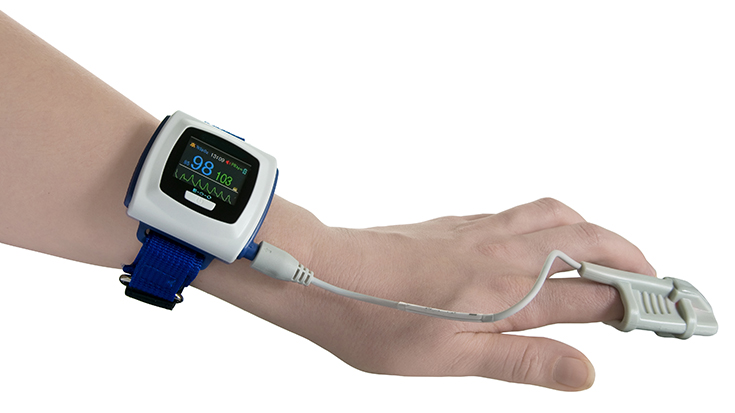
Research suggests wearable devices aimed at monitoring patient behaviors and physiological parameters can help health care providers keep tabs on patient conditions outside of the acute care hospital.
One study out of The Netherlands, for example, found good results for two internet-based activity monitors in measuring physical activity among COPD patients.
Another trial conducted by Canadian investigators concluded a wrist-worn personal fitness tracker may help monitor heart rate and sleep in patients recovering from a stay in the ICU.
AARC member Kim Bennion, MsHS, BSRT, RRT, CHC, and RTs at Intermountain Healthcare in Salt Lake City, UT, and the Uintah Basin Medical Center in Roosevelt, UT, are putting these devices to work with their patients too, and are monitoring the results through small tests of changes.
Stay tuned for more
Fitbits and pedometers are among the devices being studied, and Bennion says Uintah Basin Medical Center has launched two pilot projects involving a Masimo wearable device among opioid patients in both inpatient and home monitoring settings.
Intermountain Healthcare is evaluating their higher risk patients for possible study replication of the Uintah Basin Medical Center home monitoring process.
They have tested a number of devices from other vendors as well.
“Some have proven effective, but others have not,” Bennion said. “That’s why we do small tests of change and evaluate findings.”
Bennion also notes, “We have collaborated with two eastern hospitals who are not part of our corporation and have submitted an abstract for publication to the AARC reporting our outcomes in a small pilot for this year.”
While she can’t reveal the specifics of these efforts as yet, she provides a few hints of what is to come. As the co-innovator of a pulmonary disease symptom tracker, wearables will be incorporated.
Powerful patient profiles
How will information gathered by these wearables figure into patient care?
Bennion says RTs at Intermountain are working with another company to create powerful patient profiles based on artificial intelligence and mapping that will, in part, be based on data collected from wearables.
They believe the profiles will enable them to create targeted patient education, along with care plans that can be modified to meet the needs of individual patients.
Keep the conversation going
Are you using wearable respiratory devices with your patients? If so, then your colleagues will want to hear from you. Share what you’re discovering with this trend in respiratory care on AARConnect.
Email newsroom@aarc.org with questions or comments, we’d love to hear from you.













